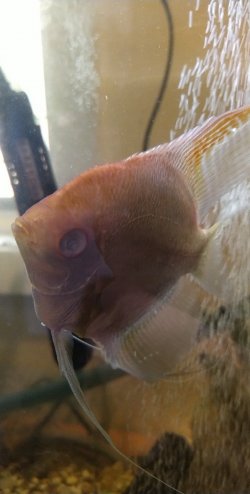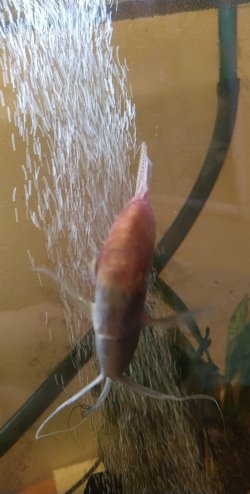Hello all, I have a single angelfish and a rhino pleco in a 30 gallon freshwater aquarium that has been cycled for months already. Recently my pleco seemed to have hurt himself on decorations and seems to be really irritated by it (even trying to jump out of the tank), and disturbed a ton of substrate in the tank. That day I noticed a bit of what seemed to be a cloudiness on my angelfish's right eye and didn't think much about it as he's had periods where he had it for a day or two and it went away. A day or two later my pleco had kept trying to jump out of the tank and disturbed a ton of the substrate that released a lot of waste into the water. I went to sleep that night and the day later I did a water change as a precaution as my angelfish's cloudiness wasn't getting better. Another day later his eye seemed to have deflated with a hole (still looks like his pupil) where his pupil should be (maybe it still is his pupil? but he doesn't seem to react to things I put in the tank near him around that eye. I did another 20% or so water change a day later after noticing cloudiness starting to form on his left eye. I tested the water after that 2nd water change in three days and it shows 0 - 0.25ppm Ammonia (it's weird because ammonia that I test from my water sources also seems to have that amount, it's never a flat 0.00ppm) and 0.00ppm nitrites (attached is a picture of those results, I should mention these test kits are around 3-4 years old so im not sure if they're still good?) I've tried a chopstick test to see if he reacts and it has to be really close for him to move away with his right eye, he still seems to respond to it from a bit of distance on his left, but again I am worried he will lose vision in that eye too. Is there anything I should do besides testing water and doing water changes? I don't really have any medicine and I'm not sure where to start with diagnosing what is causing it  I will say it seems my pleco seems to want to jump out of the tank less now so at least he won't disturb the substrate as much...
I will say it seems my pleco seems to want to jump out of the tank less now so at least he won't disturb the substrate as much...
I attached the latest water test results (today), how it seems his right eye is deflated relative to his left (does that mean he can't see anymore out of it?) his right eye, and my pleco's injury (his fins are also damage but that only seemed to start happening after he began trying to jump out of the tank )
)
I attached the latest water test results (today), how it seems his right eye is deflated relative to his left (does that mean he can't see anymore out of it?) his right eye, and my pleco's injury (his fins are also damage but that only seemed to start happening after he began trying to jump out of the tank

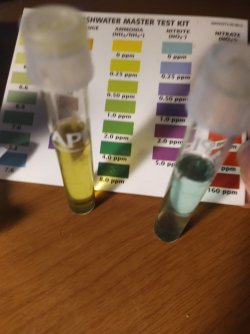
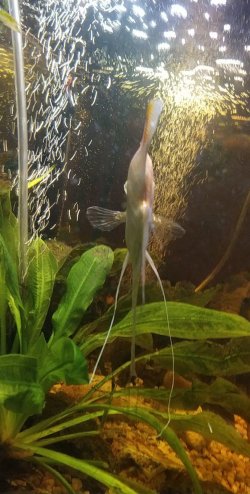
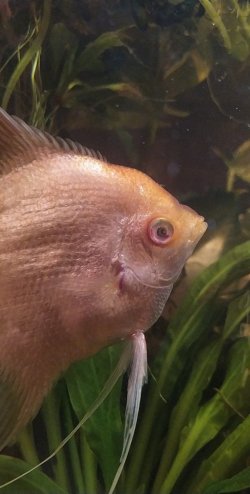
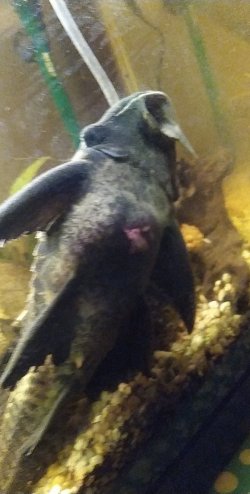

 I wasn't able to clean out the filter (I had done so a month and a half ago actually due to a previous problem) because of construction/moving out issues. Would you happen to know how to tell if a fish is blind vs just lethargic, or if he could recover maybe? As I said both of his eye "bubbles" seem to be gone and they're just flat to his body, it seems strange though I'm not sure if that's causing blindness
I wasn't able to clean out the filter (I had done so a month and a half ago actually due to a previous problem) because of construction/moving out issues. Would you happen to know how to tell if a fish is blind vs just lethargic, or if he could recover maybe? As I said both of his eye "bubbles" seem to be gone and they're just flat to his body, it seems strange though I'm not sure if that's causing blindness